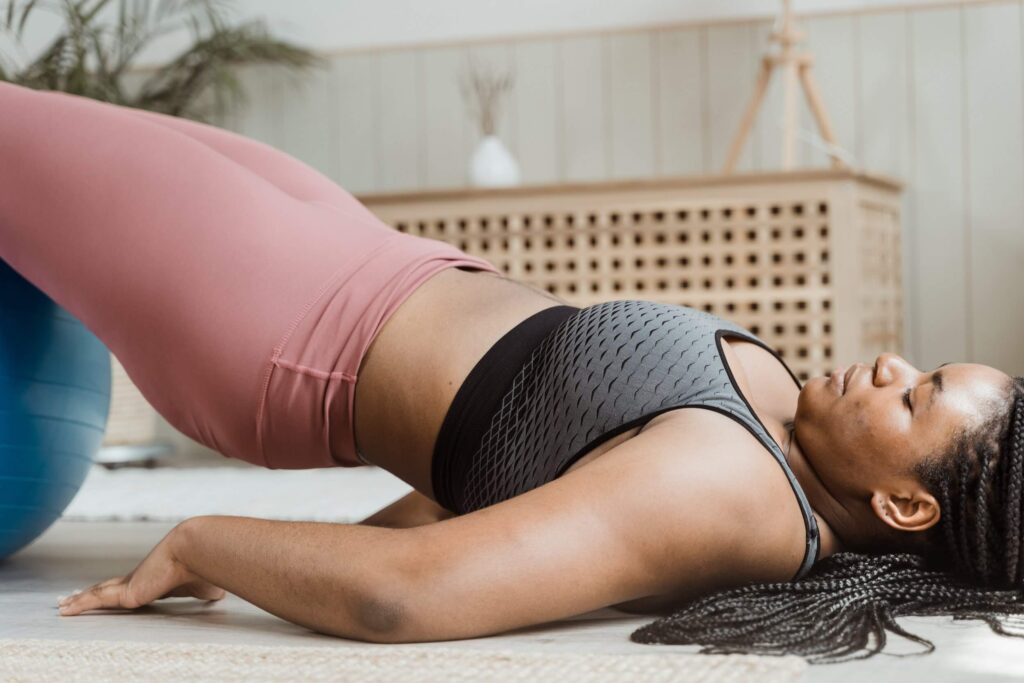‘Hip mobility’ is a term that has come to be often used in modern society. This is due to the countless hours we all spend sitting at our work desks and living physically inactive lifestyles, which are all leading to the rising prevalence of back pain.
Today we will delve deeper into the importance of hip mobility, the factors that influence it as well as provide you with some exercises that you can include in your routine to keep those hips strong and supple.
Highlights
- Hip mobility is extremely critical due to the sedentary-lifestyle habits of urban humans,
- Mobility and flexibility are often confused and used interchangeably. Mobility is the ability to move joints in a controlled manner, across a range of motion via voluntary muscle actions. Flexibility is the ability of soft tissues like muscles, tendons, fascia and ligaments to lengthen passively through a range of motion,
- With the help of exercises like hip 90-90 (for improved range of motion), controlled articular rotations (or CARs, for neuromuscular control), supported bridge-hold (for joint health and strength) and self-myofascial release (by foam rolling, etc., for soft tissue flexibility), one can enhance their hip mobility and the ability to move well every day!
The last few years have contributed to increased discussions around this topic, particularly in light of the global pandemic. With the imposition of lockdowns and WFH (work from home) conditions, our daily lives have been irrevocably impacted and we tend to spend a lot more time at home on our devices and on our comfortable chairs and sofas. As most of us have segued into a largely sedentary lifestyle and the amount of physical activity has reduced drastically for most of us, the overall mobility of our bodies has been affected.
The function of the hip joint
To fathom the importance of hip mobility, understanding the function of the hip joint is vital. Here are a few key points to bear in mind:
1. Functional anatomy: The hip joint is a ball-and-socket-type joint and is formed where the thigh bone (femur) meets the pelvis. The femur has a ball-shaped head on its end that fits into a deep socket formed in the pelvis, called the acetabulum. This makes the joint mobile as well as stable since it is present in the central region of the body.
The muscles surrounding the hip—from the thigh and the lower back—work together to ensure that the hip is stable, mobile and strong. The ligaments of the hip function like elastic bands, keeping the bones in place, while the contraction of the muscles cause it to lengthen and shorten, creating movement.
2. The structure of this joint enables a large range of motion (ROM) required for daily activities such as walking, climbing stairs, squatting, and so on.
3. Due to its position in the human body, the hip joint also plays a large role in supporting the weight of the body in static as well as dynamic actions. It is also the centre of force production, acting as the source of power in reactive and explosive movement (like jumping, bounding, and so on).

Mobility and flexibility
In addition to understanding hip function, it is essential to grasp the distinction between & the function of mobility and flexibility. People often misunderstand the two and the terms end up being used interchangeably. Let’s dive a little deeper into these concepts.
Mobility is the ability to move joints in a controlled manner, across a ROM via voluntary muscle actions. It refers to the dynamic support that joints provide during movement.
Mobility is affected by the following:
- Neuromuscular control while performing movements
- ROM
- Joint health and strength
- Soft-tissue flexibility (muscles, joints, etc.)
Flexibility is the ability of soft tissues like muscles, tendons, fascia and ligaments to lengthen passively through a ROM.
Check your hip mobility
Let’s understand the difference between hip mobility and flexibility and do a quick test to check how good your hip mobility is!
To begin, try touching your knee to your chest in two ways:
- In the first attempt, use your arms for assistance while pulling your knee towards your chest. You may find it fairly easy to do this without breaking a sweat.
- Now try doing this without using your arms for assistance. Did you come as close as you did in the first attempt? Or did you shift and hop around for a little while when you tried to do so? If you didn’t have any loss of balance and came as close as you did the first time around, then you’ve got some mobile hips!
Exercises for hip mobility
Now that we’ve understood the function of the hip and what mobility is, let’s take a look at a few exercises that you can perform at home, with minimal equipment.
1. Hip 90-90: ROM
Objective: To improve one’s ROM and rotatory mobility.
Exercise: Position both hips, as shown in the picture. This places one hip in external rotation, while the other is in internal rotation. Improving the internal rotation of this joint is essential to access the complete ROM of the joint. Be sure to practise this movement as it is commonly overlooked and leads to tightness in the lower back, the sacroiliac joint and surrounding regions.

2. Controlled articular rotations (or CARs): Neuromuscular control
Objective: To establish neuromuscular control along the ROM.
Exercise: Assume the quadruped position, as shown in the picture. Lift one knee off the floor, pulling it towards your elbow. From here, move as if drawing a circle with your hip—slowly out to the side and extending the leg behind you. From here, bring the knee back to its original position. The movement may be performed in clockwise and anti-clockwise directions.




3. Supported bridge-hold: Joint health and strength
Objective: To enhance the strength of the structures surrounding the hip joint via isometric contraction of the muscles, meaning muscle contraction without motion.
Exercise: Support the upper-back region with the aid of a stool or bench. As shown in the picture, extend your hips (towards the sky) while the knees are bent at 90 degrees. Hold this position for at least 30 seconds. The complexity level of the exercise may be increased by taking one foot off the floor and keeping the hips extended—don’t sink!


4. Self-myofascial release (by foam rolling, etc.): Soft-tissue flexibility
Objective: To improve the passive flexibility of the soft tissues surrounding the hips.
Exercise: The tension in the muscles surrounding the hip may be released by adding external pressure with the help of a foam roller or tennis ball. Place the chosen object in a place where the muscle seems to be tight or stiff and slowly roll over that point for about 30 seconds to a minute. This is a great tool to enhance the suppleness of the muscles and achieve greater ROM.



Conclusion
Being bipeds who use two legs for walking, we must pay attention to our hips which support this function. With the help of the exercises discussed above and a deeper insight on the importance of hip mobility, one can enhance the ability to move well every day! The pillars of mobility, stability and strength are critical when it comes to training and enhancing one’s ability to move fluidly through space.
Disclaimer: The contents of this article are for general information and educational purposes only. It neither provides any medical advice nor intends to substitute professional medical opinion on the treatment, diagnosis, prevention or alleviation of any disease, disorder or disability. Always consult with your doctor or qualified healthcare professional about your health condition and/or concerns and before undertaking a new healthcare regimen including making any dietary or lifestyle changes.
References
- https://www.empoweryourwellness.online/mobility-vs-stability-vs-flexibility/.
- https://www.kenhub.com/en/library/anatomy/3d-muscle-anatomy-videos.
- https://blog.bridgeathletic.com/designing-a-strength-program-importance-of-hip-mobility
- https://www.sciencedirect.com/topics/medicine-and-dentistry/muscle-isometric-contraction.








